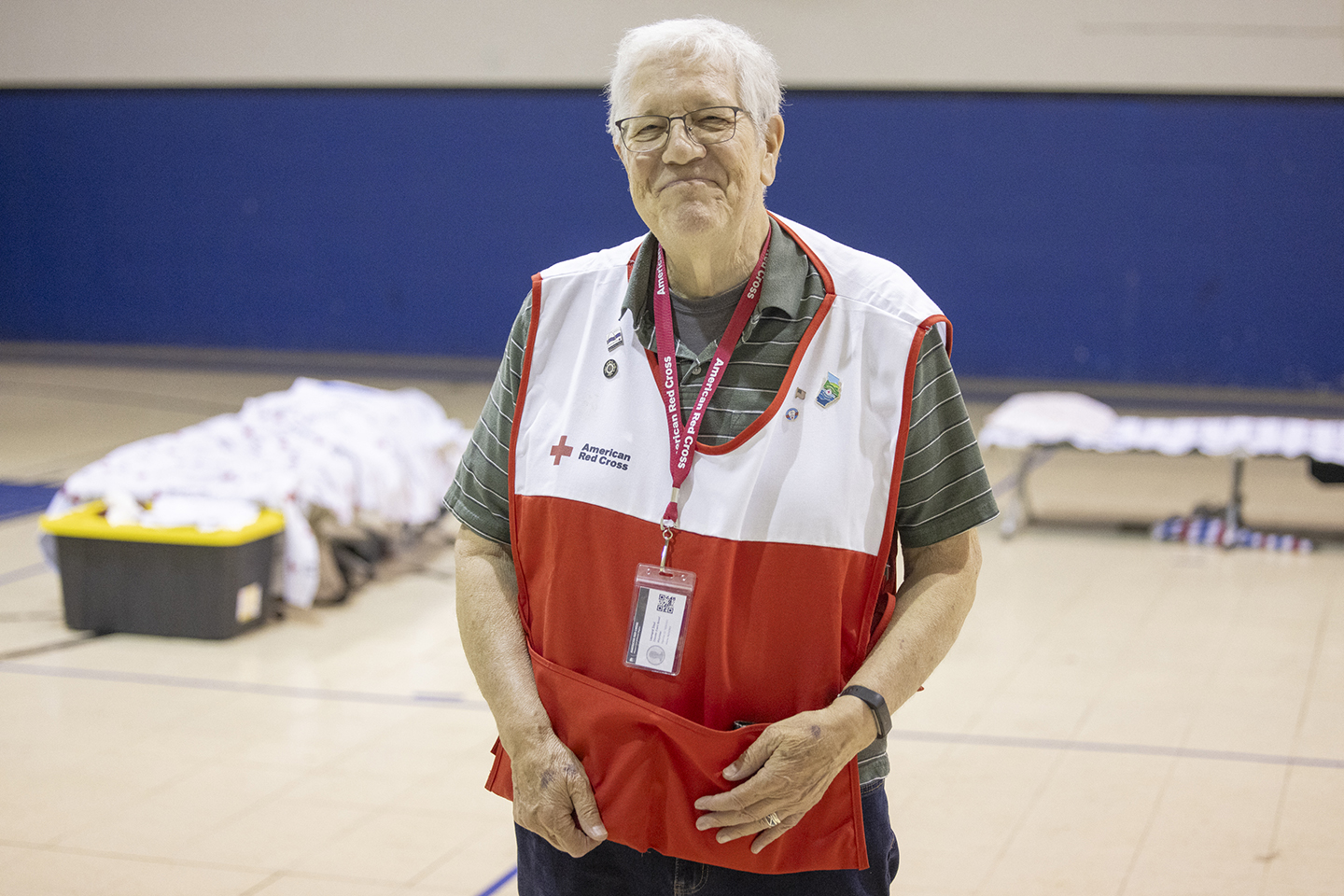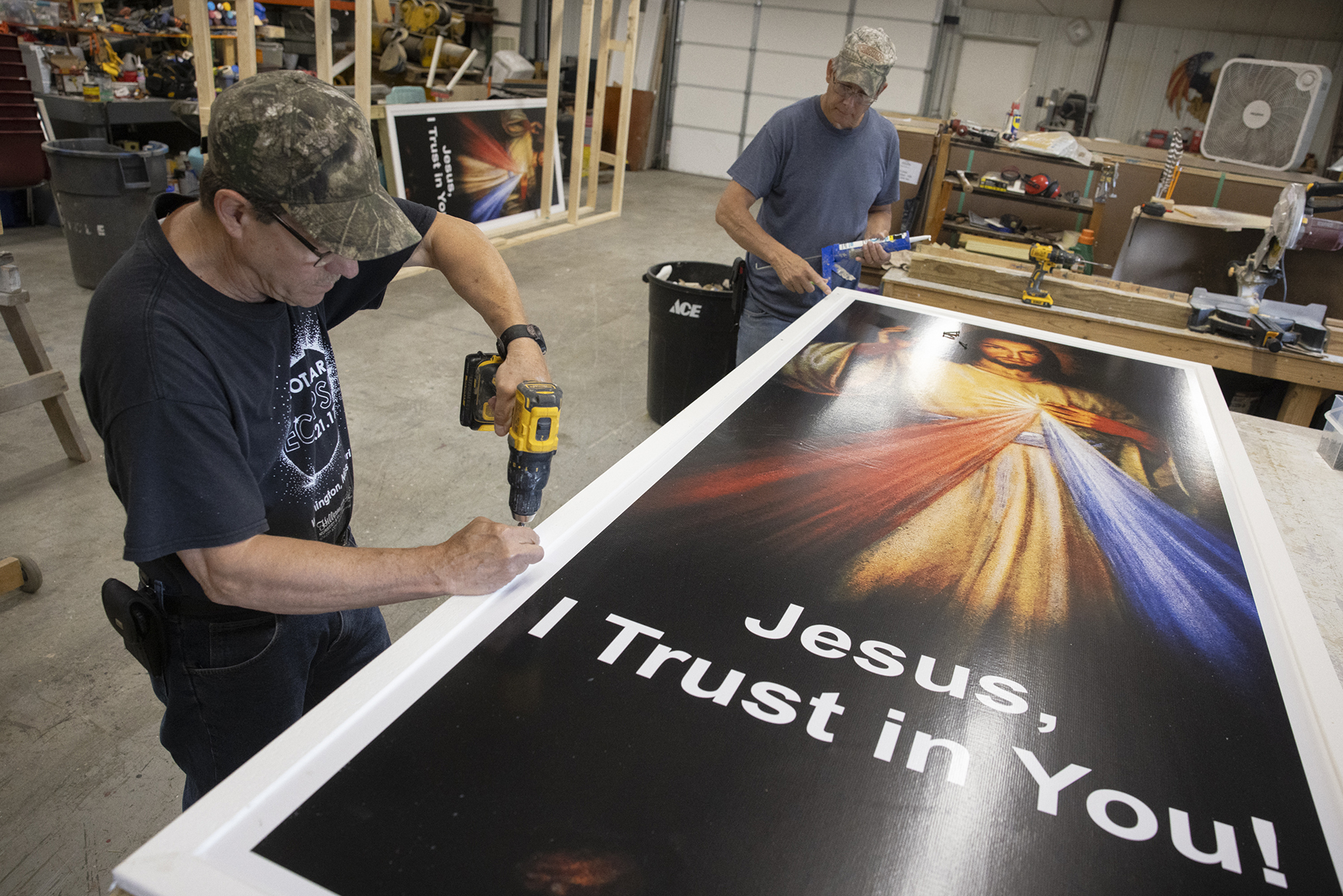Peace and Justice commissioners get their hands dirty
After vandalism a few weeks ago at Chesed Shel Emeth Cemetery, the Peace & Justice Commission considered putting out a statement in support of the archdiocese’s Jewish brethren.
But just a statement seemed inadequate on top of the commission’s other statements — on a variety of issues — over the past 18 months, since being officially commissioned by Archbishop Robert J. Carlson in August 2015.
Plus, the archbishop had called Catholic St. Louisans to action after the vandalism, to not only help clean up the historic cemetery but tangibly demonstrate support for the Jewish community.
It was time for the Peace & Justice Commission to literally get its hands dirty.
“Action speaks louder than words,” Deacon John Heithaus said, echoing fellow commissioners.
Deacon Heithaus was among a half-dozen commissioners who joined about 2,500 volunteers on short notice Feb. 22 at the cemetery in University City. Missouri Gov. Eric Greitens, the former Navy Seal, led the clean-up charge. Vice President Michael Pence joined him unannounced from another appearance in the area, with the Secret Service in tow.
In addition to Deacon Heithaus, commissioners Barbara Morrow, Jason Purnell, Angel Costa, Sister Christian Price, ASCJ and Jesuit Father Chris Collins came to work. Director Marie Kenyon joined them later at the closing interfaith prayer vigil, at which Deacon Carl Sommer represented the archdiocese.
Though work or ministry commitments prevented a 100-percent turnout for the commission on a mid-week afternoon, the clean-up project represented its evolution to a new level. The volunteerism gave it another tool for its toolbox, similar to the Delmar Divide march in visibility but dissimilar to passive statements and speaker events.
“I think we’re at a point where we want to be out in the community … doing things,” said Morrow, who took the afternoon off to help. She hustled home from her office to change into work clothes, then stopped by a store to buy trash bags and gloves en route to what she called “a wonderful event.”
“I was really happy to participate,” said Morrow, who met connections from previous Catholic and ecumenical events. One woman moved her to tears.
“She just randomly walked up to me and gave me a hug and blessing,” Morrow said. “She was so sweet. She said, ‘I hope we meet at a different time and under better circumstances.’ It just goes to show how alike we are, that we’re hurt by the same things.”
The commissioners went to the clean-up independently, mixing anonymously with the other volunteers, doing service just for the sake of doing it, supporting and standing with their neighbors.
“It just helps to be there to show compassion, to show respect and to show that many people care; all of us are brothers and sisters,” said Costa, who reworked his daily schedule to participate. The desecration “really upset me. I wanted to let them know they are not alone. I wanted to walk with them through these difficult times.”
In other words, Peace & Justice now walks the walk, in addition to talking the talking.
“Statements are a good thing; you can reach a lot of people, but maybe that’s not the same as being there to work side-by-side,” said Costa, who prayed while raking leaves.
“We need to lead the way not just by our statements but … by our actions,” Deacon Heithaus said. “We need to show this comes not only from the Church but from deep inside each of us.”
Then, other Catholics might follow their lead.
The commission is “only 20-something people, but if we could get 300,000 Catholics out there doing these things — wow!” Deacon Heithaus said. “That would be what the Church is all about.”
RELATED ARTICLE(S):Marie Kenyon named director of new Peace and Justice Commission
After vandalism a few weeks ago at Chesed Shel Emeth Cemetery, the Peace & Justice Commission considered putting out a statement in support of the archdiocese’s Jewish brethren. But just … Peace and Justice commissioners get their hands dirty
Subscribe to Read All St. Louis Review Stories
All readers receive 5 stories to read free per month. After that, readers will need to be logged in.
If you are currently receive the St. Louis Review at your home or office, please send your name and address (and subscriber id if you know it) to subscriptions@stlouisreview.com to get your login information.
If you are not currently a subscriber to the St. Louis Review, please contact subscriptions@stlouisreview.com for information on how to subscribe.







